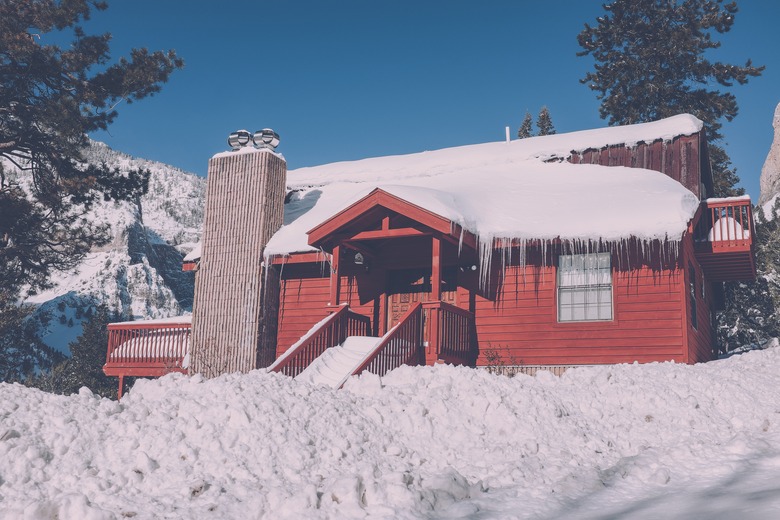How Does Heat Tape Work?
Heat tape is a generic term for a variety of cables and cords you can install on your roof and gutters to prevent ice dams or wrap around exposed pipes to prevent them from bursting in the winter. The type you use on the roof tends to be minimally flexible, while the kind you use for pipes is thin and supple. All types of heat tape are essentially resistive heaters — they carry a conducting wire that gets hot when electricity flows through it. Most come with an inline thermostat that monitors the temperature and cycles the power on and off to prevent overheating.
How It Works
How It Works
The idea behind heat tape is the same as the one behind standard resistive heaters and electric stove tops. When electricity flows through any conductor, the resistance of that conductor — know as its resistivity — generates heat. This is why the elements in resistive heaters and electric stove tops glow when the power is on. Heat tape generally generates temperatures in the range of 450 to 500 degrees Fahrenheit, but some products can produce temperatures up to 1,400 degrees.
Cable vs. Tape: The heat cable you use on your roof — which usually comes with clips to attach it to the shingles — is rounded to expose more of its surface area to the surroundings. Heat tape for wrapping around pipes is flat, and it must be installed with one of its surfaces completely in contact with the pipe to do its job. You can buy roof and gutter cable in variable lengths and wire them yourself to a controller and plug, but heat tape comes in fixed lengths and is already pre-wired. All you have to do is wrap it on the pipe and plug it in.
Installing Heat Tape on Pipes
Installing Heat Tape on Pipes
Heat tape is the go-to product for preventing exposed pipes in your crawl space or on the outside of your house from bursting in the winter. You should never install it on pipes behind walls or hidden in walls or ceilings. Choose the right kind of tape for your pipes — tape intended for metal pipes could melt PVC. Once you have the right tape, installing it is easy:
1. Clean the Pipe
Remove any insulation on the pipe, and brush off cobwebs and dirt with a stiff paintbrush. Any dirt you leave on the pipes could smolder or even catch fire when you turn on the heat.
2. Wrap the Tape
Many brands of heat tape are designed to simply wrap around the pipe, but some must be attached with electrical tape. Check the manufacturer's instructions on the packaging. Avoid crossing the heat tape over itself when wrapping — this could produce an area of excessively high heat.
3. Insulate the Pipe
Cover the pipe with foam pipe insulation after wrapping the tape. This prevents the heat from dissipating and saves energy. If the pipes are outside or in a wet location, wrap them with waterproof insulation.
4. Plug in the Tape
Leave enough slack on the end of the tape to reach a GFCI outlet without the need for an extension cord. If the tape isn't long enough to cover the entire pipe, you can usually daisy chain an additional length and plug it into the first one. Once the tape is plugged in, the thermostat will monitor the pipe temperature and turn on the heat when needed.
Installing Heat Cable on a Roof
Installing Heat Cable on a Roof
When installing heat cable on the roof, the objective is to keep a path on the roof open for ice and snow melt to drain. The characteristics of your roof and the way that snow and ice collect determine the best place for the cable, but it's often along the base of the roof near the gutters. You can also install heat cable in the gutters to keep them open in cold weather and prevent the formation of icicles.
Tips to Consider
Tips to Consider
Heat tape provides enough heat to start fires and should never be used in the vicinity of flammable objects or near gas appliances. In addition, do not install it on pipes that touch the ground, since this could cause grounding of the conductor in the tape and a potentially dangerous power surge. Always make sure the pipes have water in them before you turn on the tape and always read the manufacturer's recommendations to ensure proper installation.
